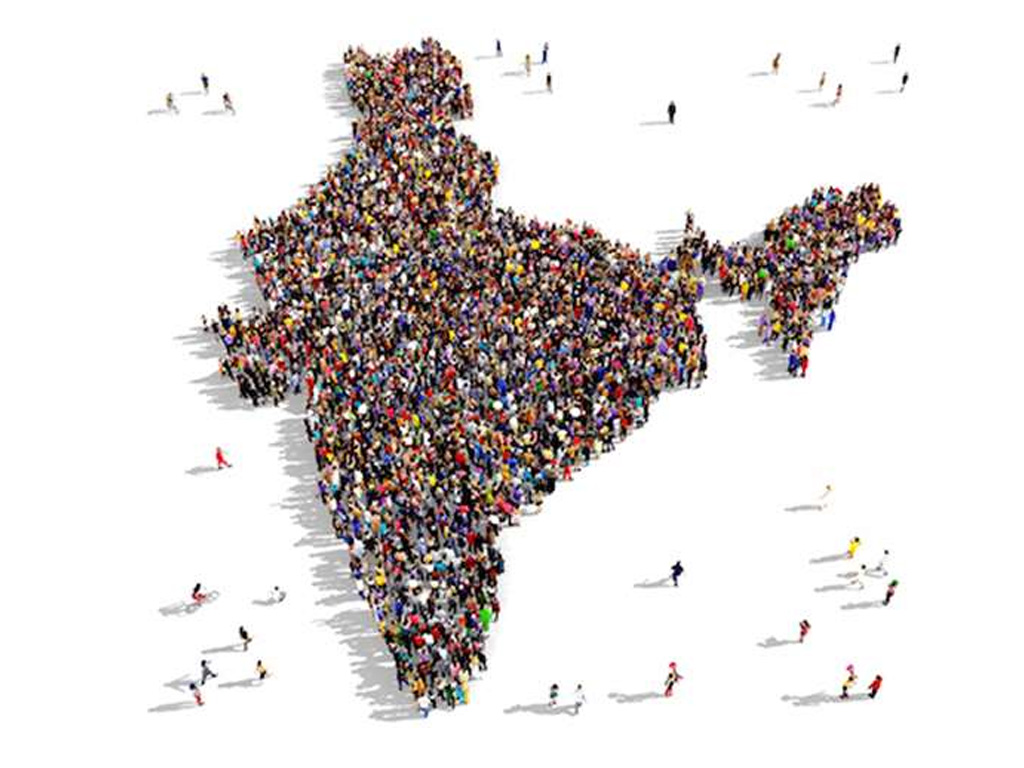
What is the Indian Population and how does it affect the economy?
Indian population People are both the means and the ends of economic development. They are an asset when at adequate strength and a liability when at excessive strength.
If the number has surpassed the optimal level, has become a liability, and has proven to be a major impediment to the success of economic planning and development.
How do we know that the Indian population is growing?
According to Worldometer’s elaboration of the most recent United Nations data, India’s current Indian population is 1,414,496,069 as of Thursday, January 19, 2023. According to the 2011 Indian census, the Indian population was exactly 1,210,193,422, indicating that the country has surpassed the one-billion-person mark. This is the world’s second-most populous country after China, and various studies predict that India will overtake China as the world’s most populous country by 2025. Despite the fact that the Government of India’s Indian Population policies, family planning, and welfare programs have resulted in a continuous decrease in the fertility rate, actual Indian population stabilization will not occur until 2050.
Reportedly, India is the world’s second-most populous country after China, and its reputation is lethal.
Why Does India Require an Indian Population Control Bill?
The two primary causes of the excessive Indian population are:
- The birth rate continues to outnumber the death rate. We have been successful in lowering death rates, but not in lowering birth rates.
- The fertility rate has been declining as a result of Indian Population policies and other measures, but it remains significantly higher than in other countries.
The aforementioned causes are linked to the various social issues in our country that are contributing to the excessive Indian population.
1. Early marriage:
Even though a girl’s marriageable age is legally 18 years old, the concept of early marriage still exists in many parts of society, and getting married at a young age extends the childbearing age. Marriage is also a sacred obligation and a universal practice in India, where nearly every woman marries at reproductive age.
1. Poverty and illiteracy:
These are two other factors contributing to rapid Indian population growth. Poor families believe that the greater the number of family members, the greater the number of opportunities to earn income. Some argue that the more children there are, the more adults are needed to care for them in their old age. Furthermore, hunger may be a reason for death for their children, implying the requirement for more children. Surprisingly, Indians continue to lag behind in the use of contraception as well as birth control methods. Many of them are either unwilling to discuss them or are completely unaware of them. Thus, another cause of overIndian Population is illiteracy.
1. Age-old cultural norm:
Sons are the breadwinners in Indian families, an age-old cultural norm. This age-old belief places significant pressure on parents to have young kids until a boy is born.
1. Illegal migration:
Last but not least, we cannot ignore the reality that continuous illegal migration from Bangladesh, Nepal, and Myanmar contributes to increased Indian population density.
What are the general effects of overIndian Population?
After 75 years of independence, India’s structure remains unstable due to the Indian population. The following are some of the major consequences of the high Indian population:
Unemployment:
Creating jobs for a large Indian population in a nation like India is extremely difficult. Every year, the percentage of illiterate people grows. As a result, the rate of unemployment is on the rise. The COVID-19 pandemic, which pushed millions into poverty and unemployment, added to these pledges.
Workforce utilisation:
The number of unemployed individuals in India is increasing as a result of the economic downturn, slow business development, and expansion activities.
Infrastructure strain:
Unfortunately, infrastructure development is not continuing to keep pace with the increasing Indian population. As a result, there is a lack of public transportation, communication, housing, education, healthcare, and so on. Slums, overcrowded housing, traffic congestion, and other problems have increased.
Overexploitation of resources:
Areas of land, water resources, and human resources are overexploited. A growing Indian Population may pose a threat to the existing ecosystem as consumption increases, putting strain on natural resources and potentially leading to a shortage of water and food.
Reduced preducation: cost increases:
Food manufacturing and distribution have been unable to keep up with the growing Indian Population, causing production costs to rise. The main effect of overIndian Population is inflation.
Inequitable incistribution:
As the Indian Population grows, there is an imbalanced distribution of income, and inequalities within the country grow. Because of the large number of people, the job is not appropriately valued, which may significantly reduce the value of the skill.
Is India’s poverty caused by overIndian Population?
OverIndian Population has pushed India to its limit. 57 billionaires control seventy percent of India’s wealth. Economic inequality leads to poverty, a lack of free medical care, a lack of social security, and poor living conditions.
How can you eliminate over Indian Population as a problem for the Indian economy?
Several actions can be taken to avoid overIndian Population:
- raise awareness about government policies that prevent and discourage having more than one or two children.
- Because of overcrowding and nature’s exhaustion, people should become more aware of their plight.
What is the impact of overpopulation on GDP?
Although overpopulation has had no effect on India’s GDP, the country’s GDP has grown at a rapid pace over the last two decades. India is now the world’s third largest economy, but due to population growth, it is still ranked 116th in terms of per capita income and 130th in terms of HDI.
The rising population has a negative impact on living standards. Overpopulation causes problems such as unemployment, food scarcity, low per capita income, capital formation issues, high pressure, social problems, economic insecurity, social insecurity, increased pressure on land, and environmental degradation.
Population changes have a significant impact on India’s economic planning and development. Despite its growing human resources and abundant natural resources, India is still classified as a developing country. India is still unable to use its natural resources effectively for the benefit of its growing population. Poverty is widespread in India as a result of inadequate clothing, inadequate housing, inadequate medical care, and malnutrition. India’s current situation is characterized by a lack of electricity in many villages, insufficient food for a large portion of its population, and inadequate health care and education facilities.
India’s global strengths in various fields, including science and technology, health care and medicine, business and industry, military, communication, entertainment, literature, and many others, cannot be overlooked. Experts believe that the government’s efforts to raise public awareness and implement strict Indian population control policies will pave the way for the country’s economic prosperity and Indian population control. The excessive Indian population has a significant impact on the Indian economy. The strain it places on the economy has grown over time. If the Indian population is not monitored, India will begin to fall in its current rankings. Every country’s strength is its economy, and India, for example, must never capitulate to challenges such as overpopulation.





